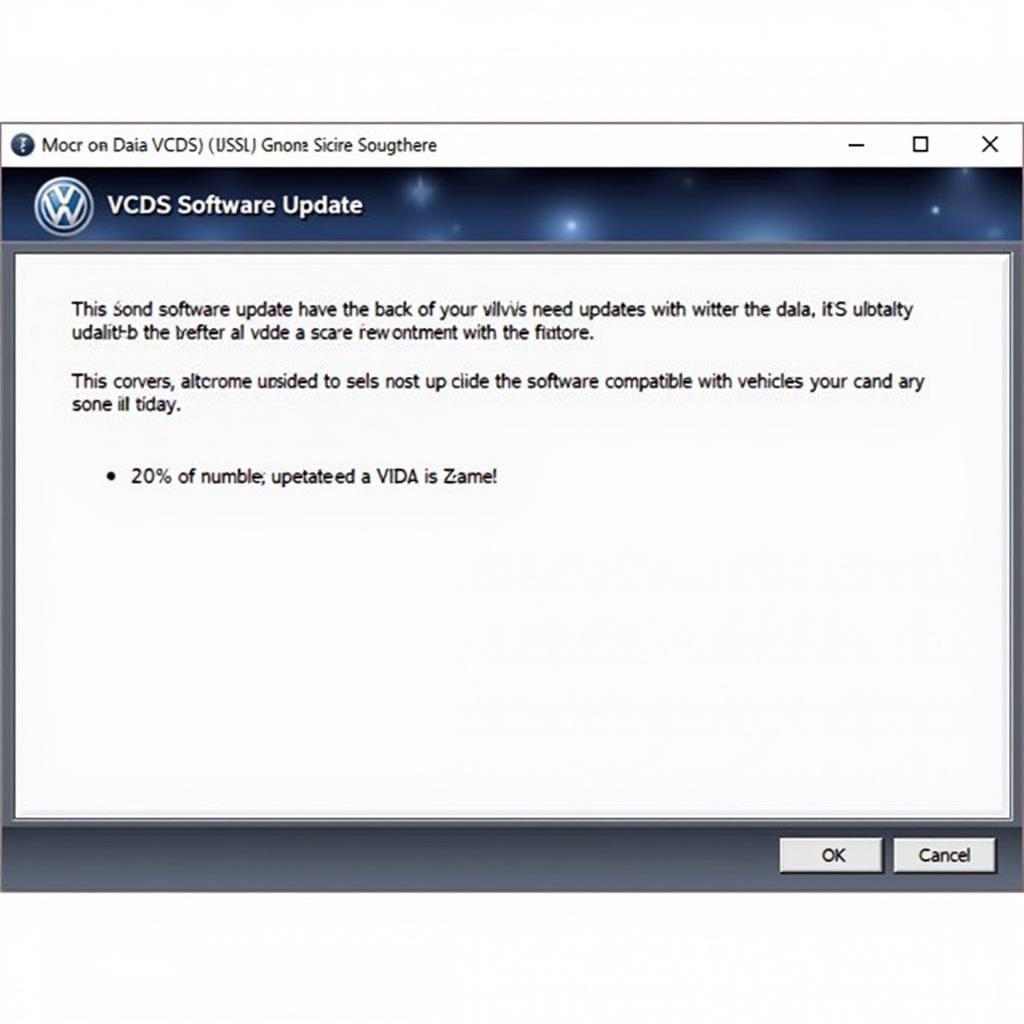VCDS EGR adaptation is a crucial procedure for maintaining optimal performance and emissions in modern diesel engines. Understanding this process is essential for both DIY enthusiasts and professional mechanics. This guide provides a comprehensive overview of VCDS EGR adaptation, covering its purpose, procedure, common issues, and solutions.
Understanding the Importance of EGR and its Adaptation with VCDS
The Exhaust Gas Recirculation (EGR) system plays a vital role in reducing harmful nitrogen oxide (NOx) emissions. It works by recirculating a portion of exhaust gases back into the intake manifold, effectively lowering combustion temperatures and minimizing NOx formation. Over time, carbon buildup can affect the EGR valve’s operation, leading to performance issues. This is where VCDS (VAG-COM Diagnostic System), also known as Ross-Tech VCDS, comes into play. VCDS allows for precise adjustments to the EGR system, ensuring it functions within its optimal parameters.
Similar to egr adaptation vcds, this process involves adjusting the EGR valve’s position to compensate for carbon buildup and maintain the desired EGR flow. This adaptation is essential for preventing issues like rough idling, reduced fuel economy, and increased emissions.
Performing VCDS EGR Adaptation: A Step-by-Step Guide
Before starting the adaptation procedure, ensure your engine is warm and idling smoothly. Connect your VCDS cable to your vehicle’s OBD-II port and launch the software on your computer.
- Select “Select Control Module.”
- Choose “Engine.”
- Go to “Basic Settings.”
- Select “EGR Adaptation.”
- Follow the on-screen prompts to initiate the adaptation process.
- Monitor the specified measuring blocks for successful completion.
After completing the adaptation, it’s crucial to perform a test drive to verify the effectiveness of the procedure. If the issues persist, further diagnostics may be required. This process is similar across many VW and Audi models, though specific procedures may vary. For specific instructions on the 1.9 TDI PD engine, you can refer to this guide: 1.9 tdi pd egr adaptation vcds.
Common Issues Encountered During VCDS EGR Adaptation
Several factors can hinder the success of VCDS EGR adaptation. These include:
- Faulty EGR valve: A mechanically or electrically defective EGR valve can prevent successful adaptation.
- Vacuum leaks: Leaks in the vacuum system can disrupt EGR operation.
- Clogged EGR cooler: A blocked EGR cooler can restrict EGR flow.
- Wiring issues: Damaged or corroded wiring can affect communication between the EGR valve and the ECU.
Troubleshooting and Solutions for EGR Adaptation Problems
Diagnosing and addressing these issues requires a systematic approach. Start by inspecting the EGR valve for physical damage or carbon buildup. Check for vacuum leaks using a vacuum gauge. If necessary, clean or replace the EGR valve, cooler, or related components. Addressing these underlying problems is crucial for successful VCDS EGR adaptation. You can find more information about the VCDS software itself here: vcds ross tech software.
Why is VCDS EGR Adaptation Important?
VCDS EGR adaptation is crucial for optimizing engine performance, fuel efficiency, and emissions. It ensures the EGR system operates correctly, minimizing NOx emissions and preventing driveability issues.
What are the Signs of a Faulty EGR Valve?
Symptoms of a faulty EGR valve include rough idling, reduced engine power, poor fuel economy, and increased emissions.
How Often Should EGR Adaptation be Performed?
The frequency of EGR adaptation depends on driving conditions and vehicle usage. In some cases, it may be necessary after cleaning the EGR valve or related components. For specific information on the 2.0 TDI engine, see this guide: egr adaptation vcds 2.0 tdi.
Can I Perform VCDS EGR Adaptation Myself?
With the right tools and knowledge, DIY enthusiasts can perform VCDS EGR adaptation. However, if you’re unsure, consulting a qualified mechanic is recommended. If you’re looking to purchase a VCDS cable, you can find options here: vcds cable for sale.
Conclusion
VCDS EGR adaptation is a valuable procedure for maintaining the health and performance of your diesel engine. Understanding this process empowers you to address EGR-related issues effectively and ensure optimal engine operation. By following the steps outlined in this guide, you can successfully perform VCDS EGR adaptation and keep your vehicle running smoothly.
FAQ
- What is VCDS? VCDS is a diagnostic software for VAG (Volkswagen Audi Group) vehicles.
- What is EGR? EGR stands for Exhaust Gas Recirculation.
- Why is EGR important? EGR reduces harmful NOx emissions.
- What are the symptoms of a faulty EGR valve? Rough idling, reduced power, and poor fuel economy.
- How do I perform EGR adaptation? Use VCDS software and follow specific procedures.
- What if adaptation fails? Further diagnostics may be required to identify underlying issues.
- Where can I get more information? CARDIAGTECH offers extensive resources on automotive diagnostics.
Need assistance? Contact us via WhatsApp: +1 (641) 206-8880, Email: [email protected] or visit us at 276 Reock St, City of Orange, NJ 07050, United States. We have a 24/7 customer support team ready to help.



